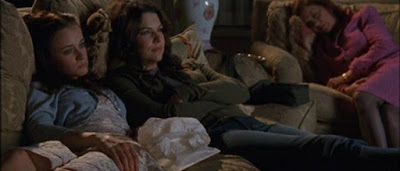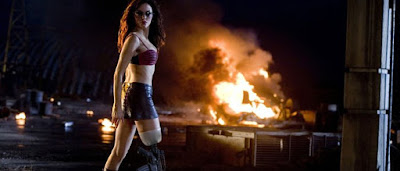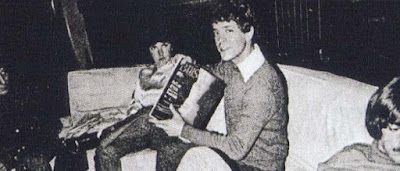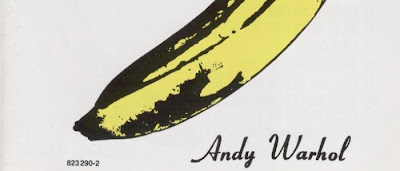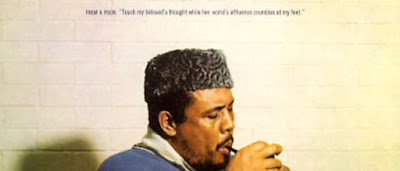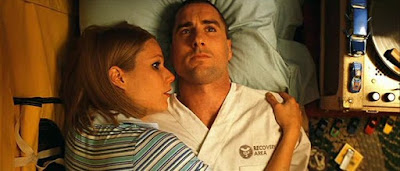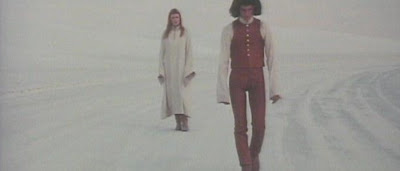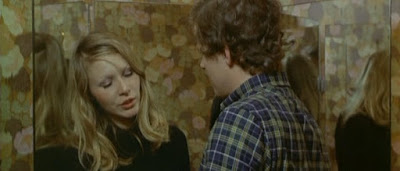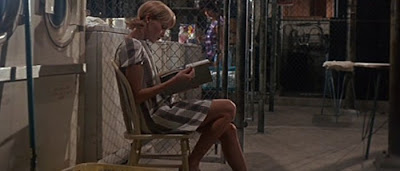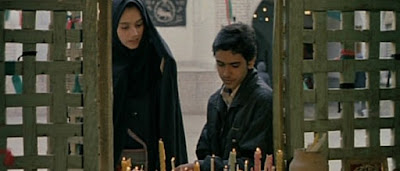 Children of Men
Children of Men
d. Alfonso Cuaron, 2006Among the current wave of Mexican filmmakers, Alfonso Cuarón, whose latest film Children of Men opened earlier this month, is the most talented and diverse. Guillermo del Toro (
Hellboy,
Blade II,
Pan’s Labyrinth) works mostly within the horror genre, almost like a more competent pre-
LOTR Peter Jackson; Alejandro González Iñárritu, the most pretentious “art” director of the three, has been making the same film, albeit masterfully, for over five years. Cuarón, however, has the amazing ability to go back-and-forth between his own personal projects (
Y tu mama tambien) and Hollywood assignments (
Harry Potter and the Prisoner of Azkaban). Though expertly-styled, his mainstream films have always fallen short of his independent works; until, that is,
Children of Men came along. A big-budget dystopian narrative starring Clive Owen and Julianne Moore, Cuarón’s film also happens to be the best acted, photographed, edited, scored, and directed movie in recent memory.
Adapted from a 1992 P.D. James novel of the same name,
Children of Men starts off twenty years from now in London. The rest of the world is in ruins and “only England soldiers on.” There’s another problem: women are no longer fertile, and the youngest person in the world (who was 18 years and several months old) has just been killed by a fanatic. Escaping a bombing at a coffee shop through sheer luck, the film’s protagonist, Theo (Owen), is an alcoholic not particularly interested in the world around him.
Soon after the film’s brilliant opening—consisting of a single shot that begins in the coffee shop, follows Theo outside, and ends with the bombing—he becomes involved with a plan he initially doesn’t understand. Contacted by his ex-wife Julian (Moore), a revolutionary rallying against the British government, he is convinced to find transit papers from his well-to-do cousin in order to get an illegal alien (“fugees” and “fish” in the film) past the security checkpoints that are now a fixture in London. He agrees, partly because of the 5,000 pounds he’s being paid, but also because of Julian, whom it is clear he still loves.
After several other astonishing sequences, it is revealed that the fugitive, Kee (Charlie-Hope Ashity), is pregnant, and the plan to see her past security is a way to get her to the Human Project, an organization working to find a cure for infertility. From the time Theo, Julian, Kee, and two of Julian’s colleagues first set out,
Children of Men takes the form of a chase movie, and Cuarón indulges in all its possibilities, choosing to shoot his movie in incredible long takes that are, in and of themselves, worth the admission price (and I paid $9 dollars).
There are two or three breathtaking long shots in
Children of Men that would make Andrei Tarkovsky and Bela Tarr look like amateurs. The first, an incredible six-minute sequence which takes place as a car is being attacked, allows the viewer to see it all without a single cut, making a scene that is funny and exhilarating, by turns beautiful and frightening. The second, easily the single greatest shot I’ve seen in a recent movie, is another several minute-long take, except this time Theo is walking through a war-torn immigrant city outside of Britain’s borders, and everything is falling apart. I have no idea how this was choreographed so perfectly, even following the protagonist through a run-down building and up a flight of stairs, but let’s thank God (and Cuarón) that it was.
Cuarón’s formal rigor is perfectly complimented by the gorgeous work of cinematographer and long-time collaborator Emmanuel Lubezki, who also shot Terrence Malick’s
The New World.
Children of Men compares favorably to
The New World’s beautiful landscapes, and the gritty photography and textures of this film, not to mention the meticulous sound design and editing, are cinema at its most hypnotic.
Seeing
Children of Men for the first time—a second viewing already awaits—was not unlike being taken to another, just as immediate, world. Part of me was so blown away by the film’s technical aspects that I don’t really care what it all means, whether it is reactionary or neutral to the issues it presents. Either way, Cuarón is to be commended for tackling such a troubling narrative, whose subject is nothing less than the world today

